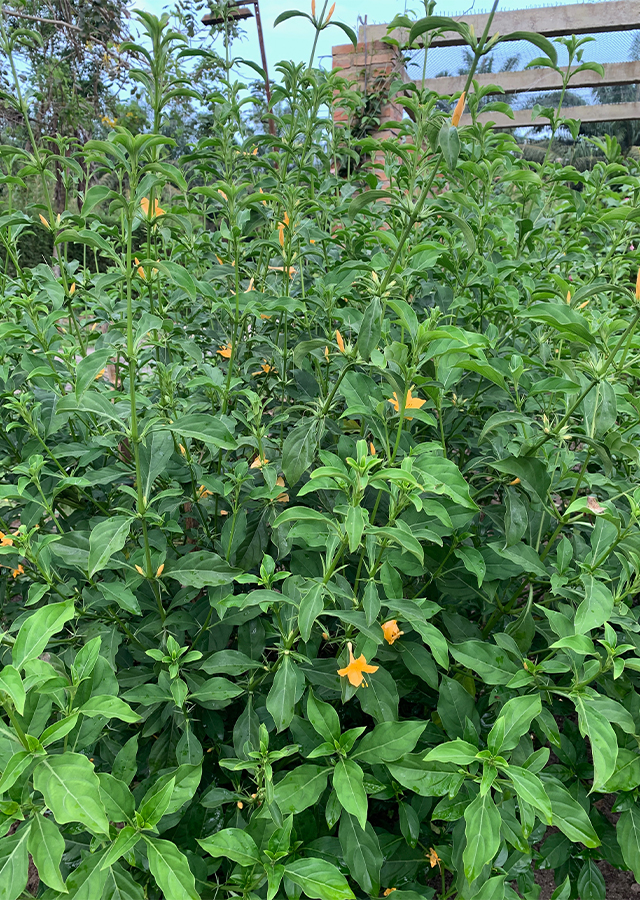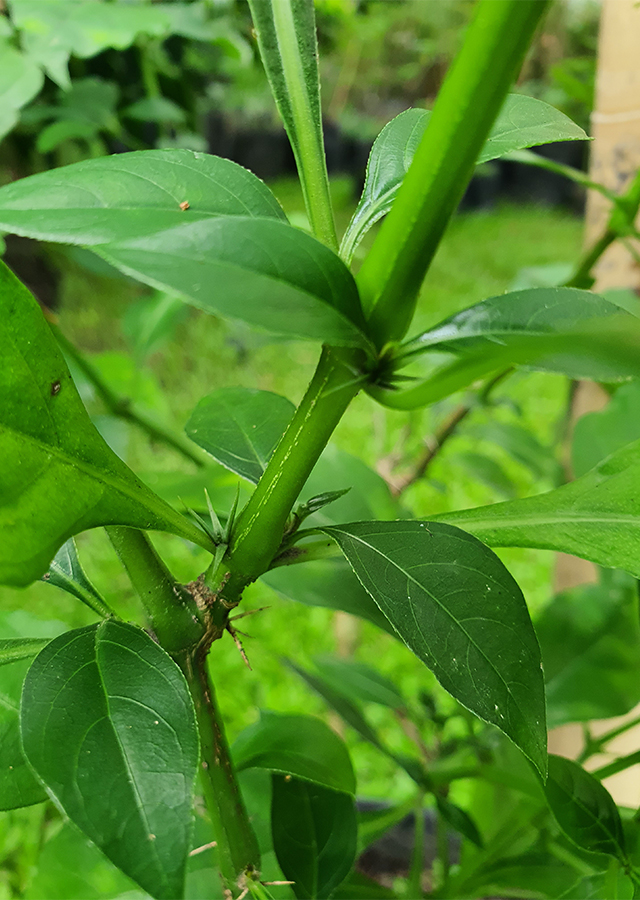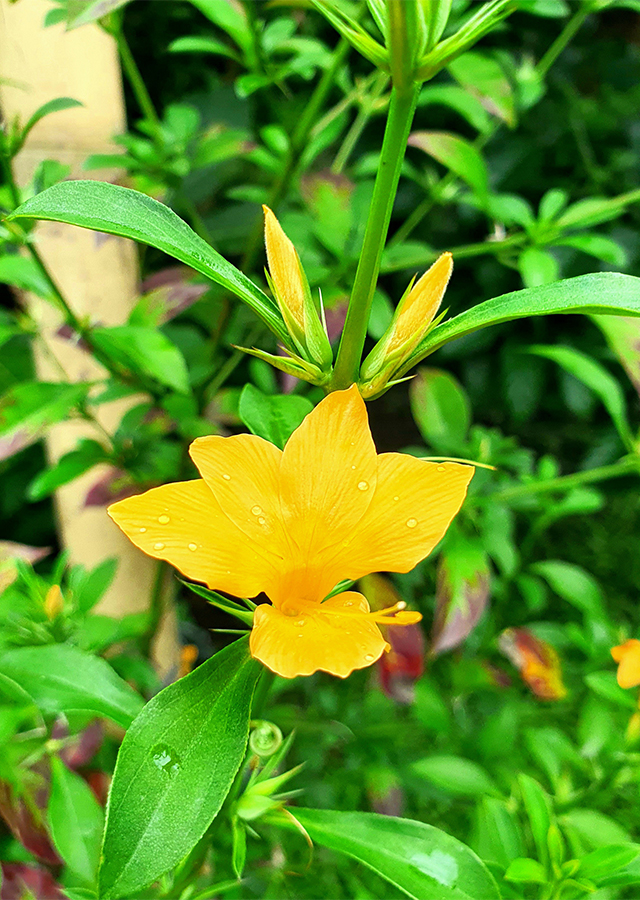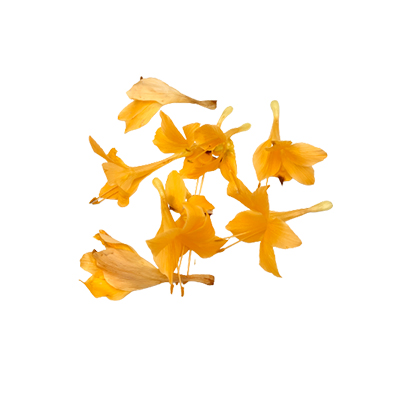Porcupine Flower
Barleria prionitis L.
Acanthaceae
Location in our garden
Principal



Synonym
Barleria echinata St.-Lag.
Barleria prionitis var. pubescens Kuntze
Prionitis hystrix (L.) Miq.
Habitus
Shrubs. An evergreen perennial shrub, growing up to 1.7 m tall
Part Used
Leaves
Flowers
Roots
Young Shoot
Growing Requirements
Full Sunshine
Need Shade
Habitat
Riverbanks
Forest
Roadside
Shrublands
Grassland
Overview
It is native to Africa, eastwards to South-East Asia through Arabia, India and Pakistan. It has a great dispersal capability, to cause environmental damage by forming dense thickets that displace native vegetation and prevent revegetation by native plants. It is gathered from the wild for use in traditional medicine.
Vernacular Names
Shakhad (Arabic), Kantajinti (Bengali), Ikshura (Sri Lanka), Vajradanti (India), Espinosa amarilla (Spanish), Duri landak (Malay), Kolinta (Tagalog-Philippines).
Agroecology
It grows best in well-drained sandy soils in the wild in thickets at low altitudes (up to 600 m), in areas receiving from about 750-900 mm of mean annual precipitation. B. prionitis is moderately intolerant of shade, growing in both full sunlight and under light forest canopies.
Morphology
- Roots - central tap type, with lateral roots.
- Stems - terete, smooth, lenticellate, with slender axillary spines.
- Leaves - blade elliptic to ovate, 4-10.5 × 1.8- 5.5 cm, both surfaces pubescent when young but soon glabrescent.
- Flowers - yellow and axillary, with the upper ones in spikes. Bracts and calyx are green, corolla is about 4 centimeters long.
- Fruits - ovoid, approximately 1.8 cm, contracted gradually at tip forming a beak, 2- seeded.
- Seeds - ovate in outline, approximately 7 × 5 mm.
Cultivation
- Generative propagation is by seeds and vegetatively by stem fragments.
- Seeds may remain viable in the soil for several years after being dropped.
Chemical Constituents
Leaves: alkaloids, glycosides, tannin, flavonoids, steroids, saponins, and phenolic compounds. Aerial parts: glycosides viz, barlerinoside, verbascoside, barlerin, lupulinoside. Whole plant: balarenone, pipataline, lupeol, prioniside A, prioniside B, and prioniside C.
Traditional Medicinal Uses
- Leaf extract showed a significant decrease of blood glucose levels and glycosylated hemoglobin.
- Study showed a significant reduction of spermatogenesis, with significant reduction of sperm motility.
- The flower extract possess significant anti-inflammatory and antinociceptive activities.
- Bark extract showed more potent activity against all test oral fungi.
- B. prionitis exhibited antidepressant activity.
- The leaf extract enhances memory function possibly mediated through the brain cholinergic system.
- In Abyssinia, it is used as febrifuge.
- In Thailand and India, decoction of leaves and flowers are used for viral fever.
- In West Bengal, it is used by the Santals as abortifacient.
- In India, flowers are used internally for the treatment of migraine, internal abscesses, edema, hemoptysis, urethral discharges, seminal disorders and to reduce obesity. Leaves used for the treatment of gastric ulcers.
- Paste of roots is applied to boils and glandular swellings.
Part Used
Reference Sources
- Tropical Plants Database, Ken Fern. (2021). Barleria prionitis L. https://tropical.theferns.info/viewtropical.php?id=Barleria+prionitis. 15-01-2021.
- Kew, Royal Botanic Gardens. Barleria prionitis L. http://www.plantsoftheworldonline.org/taxon/urn:lsid:ipni.org:names:46147-1. 15-01-2021.



